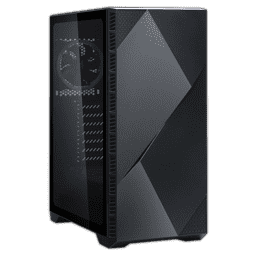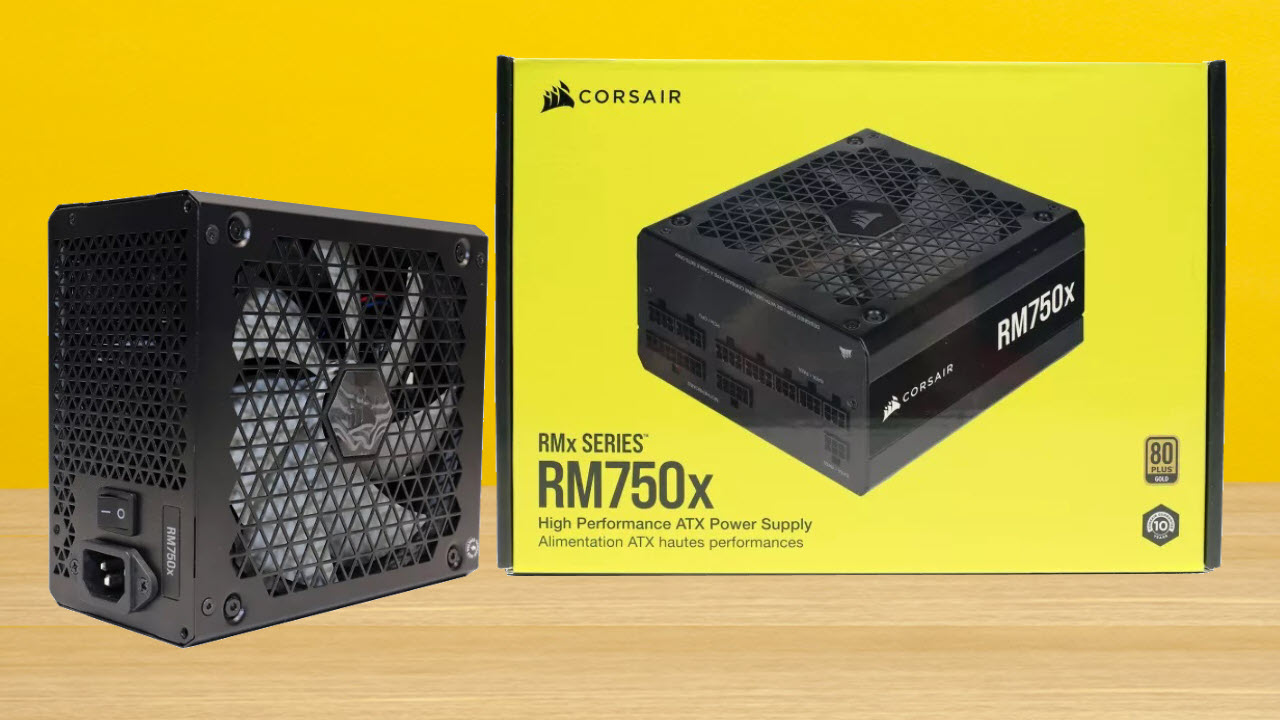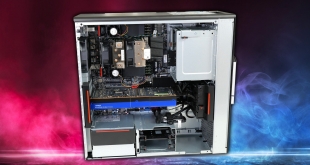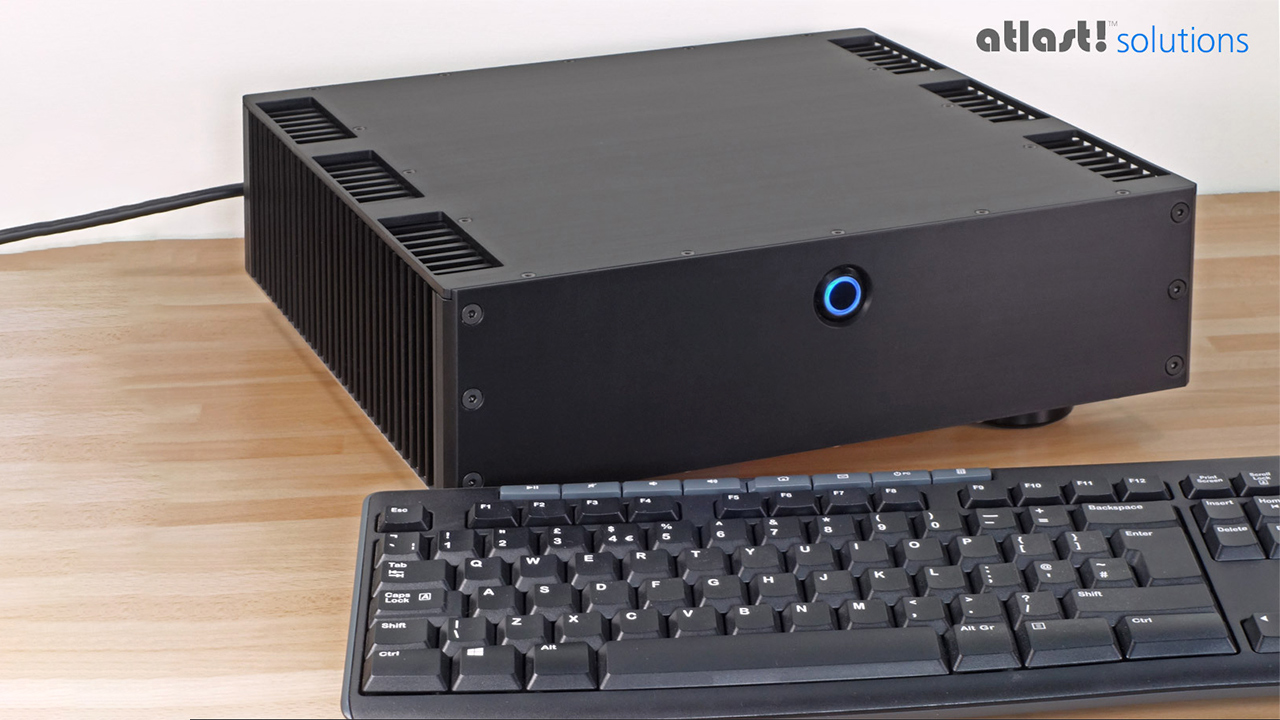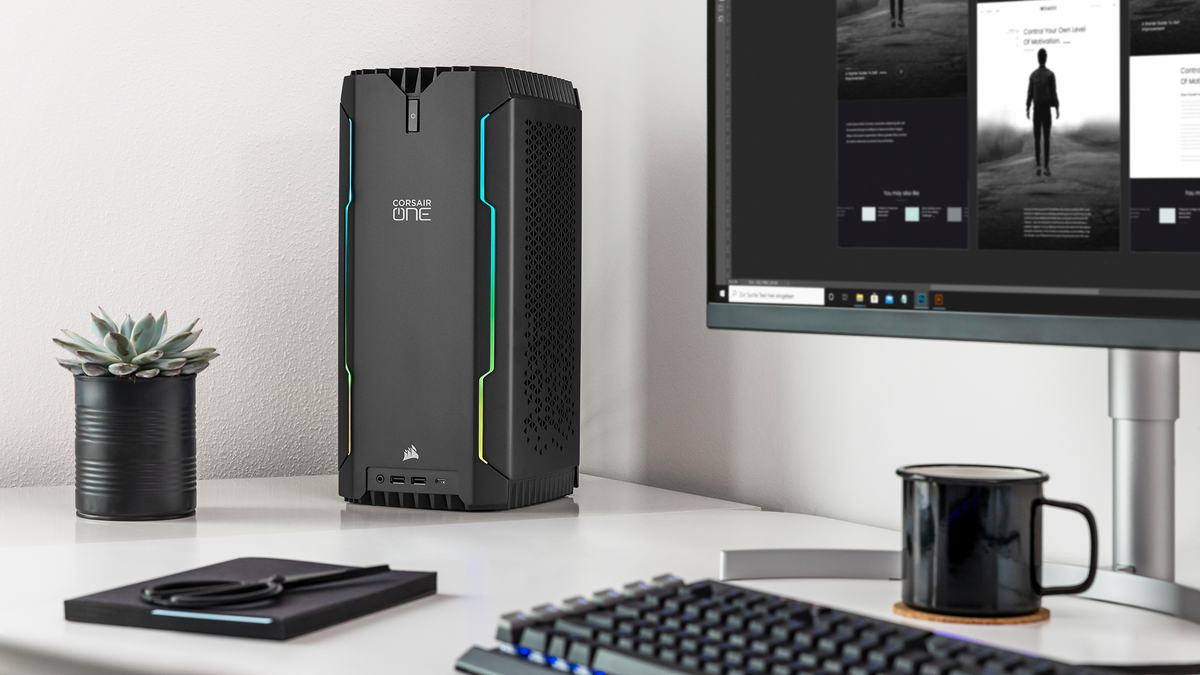The new Chia cryptocurrency has already started making waves in the storage industry, as we’ve reported back in April. With Chia trading now live, it looks set to become even more interesting in the coming months. The total netspace for Chia has already eclipsed 2 exabytes, and it’s well on its way to double- and probably even triple-digit EiB levels if current trends continue. If you’re looking to join the latest crypto-bandwagon, here’s how to get started farming Chia coin.
First, if you’ve dabbled in other cryptocurrencies before, Chia is a very different beast. Some of the fundamental blockchain concepts aren’t radically different from what’s going before, but Chia coin ditches the Proof of Work algorithm for securing the blockchain and instead implements Proof of Space — technically Proof of Time and Space, but the latter appears to be the more pertinent factor. Rather than mining coins by dedicating large amounts of processing power to the task, Chia simply requires storage plots — but these plots need to be filled with the correct data.
The analogies with real-world farming are intentional. First you need to clear a field (i.e., delete any files on your storage devices that are taking up space), then you plough and seed the field (compute a plot for Chia), and then… well, you wait for the crops to grow, which can take quite a long time when those crops are Chia blocks.
Your chances of solving a Chia coin block are basically equal to your portion of the total network space (netspace). Right now, Chia’s netspace sits at roughly 2.7 EiB (Exbibytes — the binary SI unit, so 1 EiB equals 2^60 bytes, or 1,152,921,504,606,846,976 bytes decimal). That means if you dedicate a complete 10TB (10 trillion bytes) of storage to Chia plots, your odds of winning are 0.00035%, or 0.0000035 if we drop the percentage part. Those might sound like terrible odds — they’re not great — but the catch is that there are approximately 4,608 Chia blocks created every day (a rate of 32 blocks per 10 minutes, or 18.75 seconds per block) and any one of them could match your plot.
Simple math can then give you the average time to win, though Chia calculators make estimating this far easier than doing the math yourself. A completely full 10TB HDD can store 91 standard Chia blocks (101.4 GiB). Yeah, don’t get lazy and forget to convert between tebibytes and terabytes, as SI units definitely matters. Anyway, 91 blocks on a single 10TB HDD should win a block every two months or so — once every 68 days.
Each Chia plot ends up being sort of like a massive, complex Bingo card. There’s lots of math behind it, but that analogy should suffice. Each time a block challenge comes up, the Chia network determines a winner based on various rules. If your plot matches and ‘wins’ the block, you get the block reward (currently 2 XCH, Chia’s coin abbreviation). That block reward is set to decrease every three years, for the first 12 years, after which the block reward will be static ad infinitum. The official FAQ lists the reward rate as 64 XCH per 10 minutes, and it will get cut in half every three years until it’s at 4 XCH per 10 minutes with a block reward of 0.125 XCH.
Of course, luck comes into play. It’s theoretically possible (though highly unlikely) to have just a few plots and win a block solution immediately. It’s also possible to have hundreds of plots and go for a couple of months without a single solution. The law of averages should equalize over time, though. Which means to better your chances, you’ll need more storage storing more Chia plots. Also, just because a plot wins once doesn’t mean it can’t win again, so don’t delete your plots after they win.
This is the standard cryptocurrency arms race that we’ve seen repeated over the past decade with hundreds of popular coins. The big miners — farmers in this case — want more of the total Chia pie, and rush out to buy more hardware and increase their odds of winning. Except, this time it’s not just a matter of buying more SSDs or HDDs. This time farmers need to fill each of those with plots, and based on our testing, that is neither a simple task nor something that can be done quickly.
Hardware Requirements for Chia Coin Farming
With Ethereum, once you have the requisite GPUs in hand, perhaps some of the best mining GPUs, all you have to do is get them running in a PC. Chia requires that whole ploughing and plotting business, and that takes time. How much time? Tentatively, about six or seven hours seems typical per plot, with a very fast Optane 905P SSD, though it’s possible to do multiple plots at once with the right hardware. You could plot directly to hard drive storage, but then it might take twice as long, and the number of concurrent plots you can do drops to basically one.
The best solution is to have a fast SSD — probably an enterprise grade U.2 drive with plenty of capacity — and then use that for the plotting and transfer the finished plots to a large HDD. Chia’s app will let you do that, but it can be a bit finicky, and if something goes wrong like exceeding the temp storage space, the plotting will crash and you’ll lose all that work. Don’t over schedule your plotting, in other words.
Each 101.4 GiB plot officially requires up to 350 GiB of temporary storage, though we’ve managed to do a single plot multiple times on a 260 GiB SSD. Average write speed during the plotting process varies, sometimes it reaches over 100MB/s, other times it can drop closer to zero. When it drops, that usually means more computational work and memory are being used. Plotting also requires 4 GiB of RAM, so again, high capacity memory sticks are par for the course.
Ultimately, for fast SSDs, the main limiting will likely be storage capacity. If we use the official 350 GiB temp space requirement, that means a 2TB SSD (1863 TiB) can handle at most five concurrent plots. Our own testing suggests that it can probably do six just fine, maybe even seven, but we’d stick with six to be safe. If you want to do more than that (and you probably will if you’re serious about farming Chia), you’ll need either a higher capacity SSD, or multiple SSDs. Each plot your PC is creating also needs 4GB of memory and two CPU threads, and there appear to be scaling limits.
Based on the requirements, here are two recommended builds — one for faster plotting (more concurrent plots) and one for slower plotting.
Our baseline Chia plotting PC uses a 6-core/12-thread CPU, and we’ve elected to go with Intel’s latest Core i5-11400 simply because it’s affordable, comes with a cooler, and should prove sufficiently fast. AMD’s Ryzen 5 5600X would be a good alternative, were it readily available — right now it tends to cost about twice as much as the i5-11400, plus it also needs a dedicated graphics card, and we all know how difficult it can be to find those right now.
For storage, we’ve selected a Sabrent Rocket 4 Plus 2TB that’s rated for 1400 TBW. That’s enough to create around 800–900 plots, at which point your Chia farm should be doing quite nicely and you’ll be able to afford a replacement SSD. Mass storage comes via a 10TB HDD, because that’s the most economical option — 12TB, 14TB, 16TB, and 18TB drives exist, but they all cost quite a bit more per GB of storage. Plus, you’ll probably want to move your stored plots to a separate machine when a drive is filled, but more on that below.
The other components are basically whatever seems like a reasonably priced option, with an eye toward decent quality. You could probably use a smaller case and motherboard, or a different PSU as well. You’ll also need to add more HDDs — probably a lot more — as you go. This PC should support up to six internal SATA HDDs, though finding space in the case for all the drives might be difficult.
At a rate of 18 plots per day, it would take about 30 days of solid plotting time to fill six 10TB HDDs. Meanwhile, the potential profit from 60TB of Chia plots (546 101.4 GiB plots) is currently… wow. Okay, we don’t really want to get your hopes up, because things are definitely going to change. There will be more netspace, the price could drop, etc. But right now, at this snapshot in time, you’d potentially solve a Chia block every 11 days and earn around $5,900 per month.
What’s better than a PC that can do six plots at a time? Naturally it’s a PC that can do even more concurrent plots! This particular setup has a 10-core CPU, again from Intel because of pricing considerations. We’ve doubled the memory and opted for an enterprise class 3.84TB SSD this time. That’s sufficient for the desired ten concurrent plots, which will require up to nearly all of the 3.57 TiB of capacity. We’ve also added a second 10TB HDD, with the idea being that you do two sets of five plots at the same time, with the resulting plots going out to different HDDs (so that HDD write speed doesn’t cause a massive delay when plotting is finished for each batch).
Most of the remaining components are the same as before, though we swapped to a larger case for those who want to do all the farming and plotting on one PC. You should be able to put at least 10 HDDs into this case (using the external 5.25-inch bays). At a rate of 30 plots per day, it should take around 30 days again to fill ten 10TB drives (which aren’t included in the price, though we did put in two). As before, no promises on the profitability since it’s virtually guaranteed to be a lot lower than this, but theoretically such a setup should solve a Chia block every seven days and earn up to $9,800 per month.
Chia farming rig from https://t.co/IPJadpARFa 96 terabytes running off a RockPi4 Model C pic.twitter.com/F6iKOMIdIyJanuary 15, 2021
See more
Long-term Efficient Chia Farming
So far we’ve focused on the hardware needed to get plotting, which is the more difficult part of Chia farming. Once you’re finished building your farm, though, you’ll probably want to look at ways to efficiently keep the farm online. While it’s possible to build out PCs with dozens of HDDs using PCIe SATA cards and extra power supplies, it’s likely far easier and more efficient to skip all that and go with Raspberry Pi. That’s actually the recommended long-term farming solution from the Chia creators.
It’s not possible to directly connected dozens of SATA drives to Raspberry Pi, but using USB-to-SATA adapters and USB hubs overcomes that limitation. There’s the added benefit of not overloading the 5V rail on a PSU, since the enclosures should have their own power — or the USB hubs will. And once you’re finished building out a farm, the power costs to keep dozens of hard drives connected and running are relatively trivial — you could probably run 50 HDDs for the same amount of power as a single RTX 3080 mining Ethereum.
How to Create Chia Plots
We’ve mostly glossed over the plot creation process so far. It’s not terribly complicated, but there are some potential pitfalls. One is that the plotting process can’t be stopped and restarted. You don’t want to do this on a laptop that may power off, though theoretically it should be possible to put a system to sleep and wake it back up, and then let it pick up where it left off. But if you overfill the temp storage, Chia will crash and you’ll lose all progress on any plots, and since it can take six or seven hours, that’s a painful loss.
The first step naturally is to install Chia. We’re using Windows, though it’s available on MacOS and can be compiled from source code for various Linux platforms. Once installed, you’ll need to let the blockchain sync up before you can get to work on farming. However, you can still create plots before the blockchain gets fully synced — that takes perhaps 10 hours, in our experience, but it will inevitably start to take longer as more blocks get added.
You’ll need to create a new private key to get started — don’t use the above key, as anyone else on the ‘net can just steal any coins you farm. Screenshot and write down your 24 word mnemonic, as that’s the only way you can regain access to your wallet should your PC die. Store this in a safe and secure place!
Next, you’ll see the main page. As noted above, it can take quite a while to sync up, and any information displayed on this screen prior to having the full blockchain won’t be current. For example, the above screenshot was taken when the total netspace was only 1.51 EiB (sometime earlier this week). The Wallets and Farm tabs on the left won’t have anything useful right now, so head over to Plots and get started on the plotting process.
If you’ve previously generated plots, you could import the folder here, but your key has to match the key used for generating plots. If you were to gain access to someone else’s plot files somehow, without the key they’d do you no good. Again, don’t lose your key — or share it online! Hit the Add a Plot button, though.
Here’s where the ‘magic’ happens. We’ve specified six concurrent plots, with a ten minute delay between each plot starting. That should result in roughly a ten minute delay between plots finishing, which should be enough time for the program to move a finished plot to the final directory.
The Temporary Directory will be your big and fast SSD drive. You could try for a smaller delay between plots starting, but six concurrent plots will certainly put a decent load on most SSDs. Note also that Chia says it needs 239 GiB of temporary storage per plot — it’s not clear (to us) if that’s in addition to the 101.4 GiB for the final plot, but the amount of used space definitely fluctuates during the course of plot creation.
Once everything is set, click the Create Plot button at the bottom, and walk away for the next 6–8 hours. If you come back in eight hours, hopefully everything will have finished without incident and you’ll now see active plots on your Chia farm. Queue up another set of six plots (or however many plots your PC can handle concurrently), and done properly you should be able to get around three cycles in per day.
Then you just leave everything online (or migrate full drives to a separate system that uses the same key), and eventually you should manage to solve a block, earn some XCH coin, and then you can hoard that and hope the price goes up, or exchange it for some other cryptocurrency. Happy farming!
Chia Farming: The Bottom Line
Just looking at that income potential should tell you one thing: More people are going to do this than what we’re currently seeing. That or price is going to implode. For the cost of an RTX 3080 off of eBay right now, you could break even in just a couple of weeks. Our short take: anyone looking for new hard drives or large SSDs — could be in for a world of hurt as Chia causes a storage shortage.
During its first week of trading, Chia started with a price of around $1,600, climbed up to a peak of around $1,900, and then dropped to a minimum value of around $560. But then it started going up again and reached a relatively stable (which isn’t really stable at all) $1,000 or so on Friday. A couple more exchanges have joined the initial trio, with OKex accounting for around 67% of trades right now.
More importantly than just price is volume of trading. The first day saw only $11 million in trades, but Thursday/Friday has chalked up over 10X as much action. It might be market manipulation, as cryptocurrencies are full of such shenanigans, but anyone that claimed Chia was going to fade away after the first 12 hours of trading clearly missed the boat.
Unlike other cryptocurrencies, Chia will take a lot more effort to bring more plots online, but we’re still seeing an incredibly fast ramp in allocated netspace. It’s currently at 2.7 EiB, which is a 55% increase just in the past four days. We’ll probably see that fast rate of acceleration for at least a few weeks, before things start to calm down and become more linear in nature.
There are still concerns with e-waste and other aspects of any cryptocurrency, but Chia at least does drastically cut back on the power requirements. Maybe that’s only temporary as well, though. 50 HDDs use as much power as a single high-end GPU, but if we end up with 50X as many HDDs farming Chia, we’ll be right back to square one. For the sake of the environment, let’s hope that doesn’t happen.


